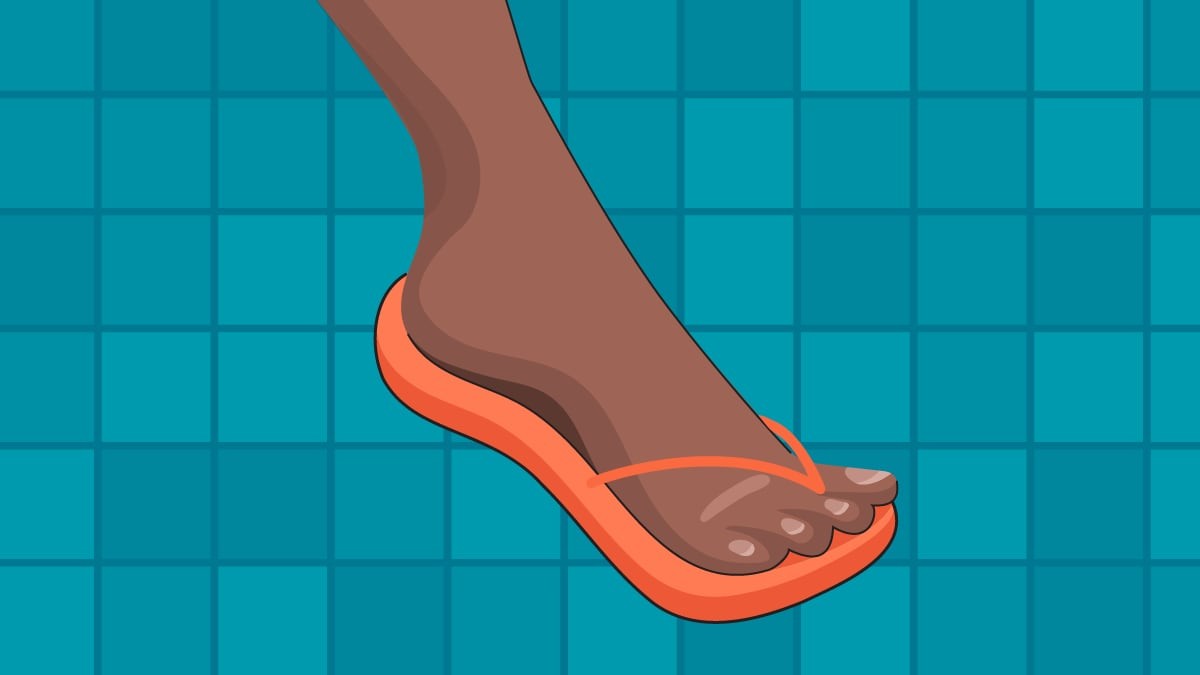Ringworm, despite its misleading name, is not caused by worms. This common skin condition is actually a fungal infection. The culprits behind ringworm are a group of fungi known as dermatophytes. Understanding What Causes Ringworm is crucial for effective prevention and treatment. The most frequent types of fungi responsible for ringworm belong to the genera Trichophyton, Microsporum, and Epidermophyton. These microscopic organisms thrive on keratin, a protein found in skin, hair, and nails. When these fungi invade the skin, they can cause the characteristic circular, ring-like rash that gives ringworm its name. Fungal nail infections, also known as onychomycosis, can occur when these same fungi penetrate under the nail, often through tiny cracks in the nail or the surrounding skin.
Ringworm is highly contagious and can spread in several ways. Knowing the modes of transmission is key to minimizing your risk of infection.
How Ringworm Spreads: Modes of Transmission
Ringworm is easily transmitted, making it a common infection across various populations. The primary ways ringworm spreads include:
-
Direct Skin-to-Skin Contact: This is one of the most common ways ringworm is transmitted. Direct contact with an infected person or animal can readily spread the fungal infection. This can occur through everyday interactions or during close contact activities.
-
Contact with Contaminated Objects (Fomites): Ringworm fungi can survive on objects for a period, making indirect transmission possible. Sharing personal items like towels, clothing, bed sheets, combs, and sports equipment can facilitate the spread of ringworm if these items are contaminated with the fungus.
-
Contact with Contaminated Surfaces: Fungal spores can also linger on surfaces, especially in damp and communal areas. Surfaces such as locker room floors, public showers, and pool decks can harbor ringworm fungi and act as sources of infection.
Understanding these transmission routes highlights the importance of preventive measures in avoiding ringworm infections.
Risk Factors: Who is More Susceptible to Ringworm?
While anyone can contract ringworm, certain factors can increase your susceptibility to infection. Being aware of these risk factors can help you take extra precautions. These include:
-
Walking Barefoot in Public Areas: Damp and warm public places like showers, locker rooms, and swimming pool areas are breeding grounds for fungi. Walking barefoot in these environments significantly increases your risk of picking up ringworm.
-
Participation in Contact Sports: Sports involving close skin-to-skin contact, such as wrestling, judo, and rugby, elevate the risk of ringworm transmission. Direct contact during these activities can easily spread the fungal infection.
-
Wearing Tight Shoes and Socks: Constricting footwear and socks, especially those made of non-breathable materials, can create a warm, moist environment around the feet. This environment is ideal for fungal growth, increasing the likelihood of foot ringworm (athlete’s foot).
-
Excessive Sweating (Hyperhidrosis): Similar to tight shoes, excessive sweating provides the moisture fungi need to thrive. Individuals who sweat profusely are more prone to fungal infections, including ringworm.
-
Close Contact with Animals: Animals, especially pets like cats, dogs, and farm animals, can carry ringworm. Touching infected animals or their bedding can lead to ringworm transmission to humans.
-
Weakened Immune System: Individuals with compromised immune systems, whether due to medical conditions or medications, are more vulnerable to infections, including ringworm. Their bodies may have difficulty fighting off the fungal invasion.
-
Diabetes: People with diabetes have a higher risk of various infections, including fungal infections. They are particularly susceptible to fungal nail infections, which can sometimes become severe.
[ Wearing shower sandals or flip-flops is crucial to prevent ringworm in public locker rooms and showers.]
Wearing shower sandals or flip-flops is crucial to prevent ringworm in public locker rooms and showers.]
Prevention Strategies: Minimizing Your Risk of Ringworm
Preventing ringworm involves adopting good hygiene practices and being mindful of potential sources of infection. Effective prevention methods include:
-
Maintain Clean and Dry Skin: Regularly washing your skin with soap and water, and thoroughly drying yourself, especially after showering or exercising, helps prevent fungal growth.
-
Wear Breathable Footwear: Opt for shoes that allow air circulation around your feet. This helps to keep your feet dry and reduces the risk of fungal infections like athlete’s foot.
-
Use Protective Footwear in Public Showers and Locker Rooms: Always wear shower shoes or flip-flops in public showers, locker rooms, and pool areas to avoid direct contact with potentially contaminated surfaces.
-
Keep Nails Short and Clean: Regularly trim and clean your fingernails and toenails. This helps prevent fungi from accumulating under the nails.
-
Change Socks and Underwear Daily: Changing your socks and underwear at least once a day, especially if you sweat a lot, helps to keep the skin dry and reduces fungal growth.
-
Avoid Sharing Personal Items: Do not share clothing, towels, sheets, razors, or other personal items with others to prevent the spread of ringworm and other infections.
-
Shower After Sports Activities: Athletes should shower immediately after practices or games, especially contact sports, to remove sweat and potential fungal spores from the skin.
-
Keep Sports Gear Clean: Regularly clean and disinfect sports gear, including helmets, pads, and protective equipment, to prevent fungal buildup. Avoid sharing sports gear with teammates.
-
Disinfect Surfaces: Use common disinfectants like diluted bleach solutions or antifungal sprays to clean surfaces, especially in bathrooms and areas where pets spend time. This can help kill fungal spores.
Ringworm and Pets: Protecting Yourself and Your Animals
Pets can be a source of ringworm infection for humans. If you have pets, especially cats and dogs, it’s important to take precautions:
-
Veterinary Care for Pets: If you suspect your pet has ringworm (look for circular patches of hair loss, scaly skin), take them to a veterinarian promptly for diagnosis and treatment.
-
Minimize Contact with Infected Pets: While your pet is being treated, wear gloves and long sleeves when handling them to avoid direct skin contact.
-
Handwashing After Pet Contact: Wash your hands thoroughly with soap and running water after touching your pet, especially if they are being treated for ringworm.
-
Clean and Disinfect Pet Areas: Vacuum areas of your home where your pet spends time frequently. Disinfect surfaces and pet bedding regularly to eliminate fungal spores.
[]
If you have a weakened immune system, take extra precautions around animals and avoid handling pets with ringworm to minimize your risk of infection.
Conclusion: Understanding and Preventing Ringworm
Understanding what causes ringworm and how it spreads is the first step in preventing this common fungal infection. By practicing good hygiene, avoiding high-risk environments, and taking precautions around pets, you can significantly reduce your chances of getting ringworm. If you suspect you have ringworm, consult a healthcare professional for proper diagnosis and treatment. Early intervention can prevent the infection from spreading and ensure effective management.
